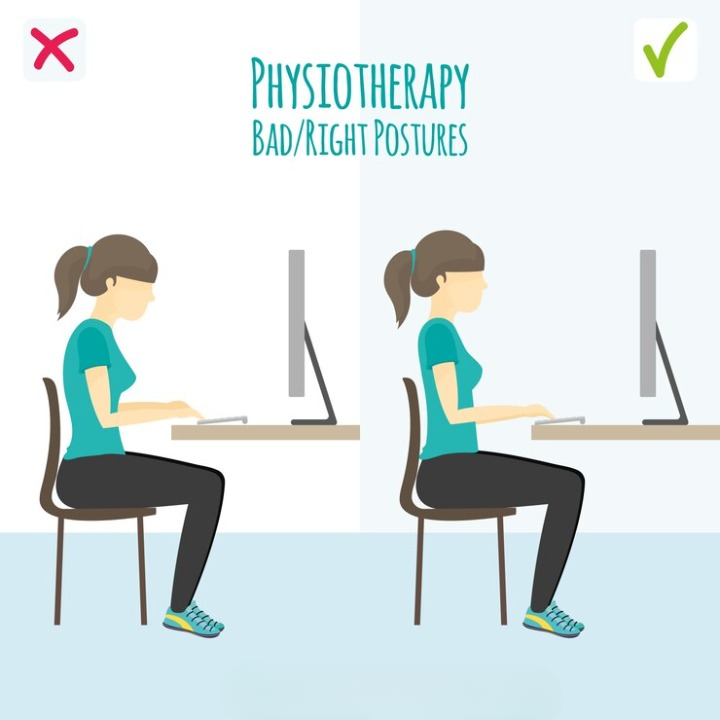Maintaining good posture is crucial for overall health and well-being. Poor posture can lead to various issues, including back pain, neck strain, and even headaches. Fortunately, incorporating posture correction in Mulund West exercises into your daily routine can help. These exercises are simple yet effective and can be done at home without any special equipment. Here are the top 12 simple exercises for effective posture correction.
Wall Angels
Wall angels are great for increasing shoulder mobility and upper-back strength. Stand with your back to a wall and your feet shoulder-width apart. Push your lower back, upper back, and head on the wall. Raise your arms into a “W” shape, maintaining your elbows and wrists against the wall. Slowly extend your arms upward to form a “Y” shape. Return to your starting place and repeat. This exercise improves alignment and posture correction by exercising the muscles in the upper back.
Cat-Cow Stretch
The cat-cow stretch is a gentle approach to increase spine flexibility and reduce tension. Begin on your hands and knees in a tabletop position. Inhale, arch your back , and raise your head and tailbone to the ceiling (cow posture). Exhale, round your back, and tuck your chin into your chest (cat stance). Repeat the flow for a few breaths. This exercise assists with posture correction by increasing spinal mobility and decreasing stiffness.
Chest Opener
A tight chest can lead to bad posture. The chest opening stretch focuses on this area. Stand up straight, interlace your fingers behind your back, and slowly move your hands down and away from your body. Lift your chest and hold the stretch for 20 to 30 seconds. This exercise reduces the effects of slouching and promotes improved posture correction by opening up the chest and shoulders.
Chin Tucks
Chin tucks strengthen the muscles in the front of the neck, which helps to improve forward head posture. Sit or stand with a straight back. Tuck your chin to your chest without dipping your head down. Hold for a few seconds then release. Repeat a few times. This simple exercise improves posture by aligning the head with the spine and decreasing neck strain.
Shoulder Blade Squeeze
Strengthening the muscles between your shoulder blades is critical for maintaining proper posture. Sit or stand, arms at your sides. Squeeze your shoulder blades together for a few seconds. Release and repeat. This exercise aids in posture correction by strengthening the upper back muscles, resulting in a more upright position.
Plank
The plank is a core strengthening exercise that also improves posture. Begin in a push-up position, with your hands beneath your shoulders and your body aligned from head to heels. Engage your core and maintain the position as long as possible. This exercise improves posture by increasing core stability and supporting the spine.
Bridge
The bridge exercise focuses on the lower back, glutes, and hamstrings. Lie on your back, legs bent, feet flat on the floor. Lift your hips to the ceiling, clenching your glutes at the peak. Hold for a few seconds before lowering back down. Repeat a few times. This exercise improves posture by strengthening the posterior chain and minimizing lower back strain.
Child’s Pose
Child’s Pose is a restorative yoga practice that extends the spine and reduces tension. Kneel on the floor, big toes touching, knees wide apart. Sit back on your heels and extend your arms forward, lowering your chest to the ground. Hold the pose for a few breaths. This practice improves posture by lengthening the spine and encouraging relaxation.
Thoracic Extension
Improving thoracic mobility is essential for proper posture. Sit on a chair with a backrest that reaches your middle back. Place your hands behind your head and gently lean back over the backrest to lengthen your upper spine. Hold for a few seconds, then return to the starting position. Repeat a few times. This exercise aids in posture correction by increasing upper-back mobility and decreasing stiffness.
Bird Dog
The bird dog exercise develops the core and back muscles, resulting in improved posture. Begin on your hands and knees in a tabletop position. Extend your right arm forward and your left leg backward while maintaining a straight line. Hold for a few seconds, then return to the starting position. Repeat on the other side. This exercise promotes posture correction by strengthening balance and core stability.
Standing Forward Bend
The standing forward bend stretches your hamstrings and lower back. Stand with your feet hip-width apart. Hinge at the hips and fold forward, reaching for the ground. Keep your knees slightly bent if necessary. Hold the position for a few breaths before slowly rising back up. This exercise aids in posture correction by reducing stress in the lower back and increasing flexibility.
Seated Spinal Twist
The sitting spinal twist improves spinal mobility and alleviates tension. Sit on the floor, legs outstretched. Bend your right knee and position your foot outside of your left leg. Position your right hand on the floor behind you, and your left elbow outside your right knee. Gently twist your torso to the right and glance over your shoulder. Hold for a few breaths before repeating on the opposite side. This exercise improves posture correction by increasing spinal rotation and flexibility.
Incorporating these top 12 basic exercises into your everyday practice can significantly improve your posture. Consistency is necessary to see results. Focus on maintaining perfect form while progressively increasing the time and intensity of each exercise. With frequent practice, you will notice improved alignment, less pain, and a greater sense of well-being. Remember that proper posture is more than just seeming confident; it is about feeling your best every day. So, begin your journey to successful posture correction today and reap the benefits of a healthier, more aligned body.


